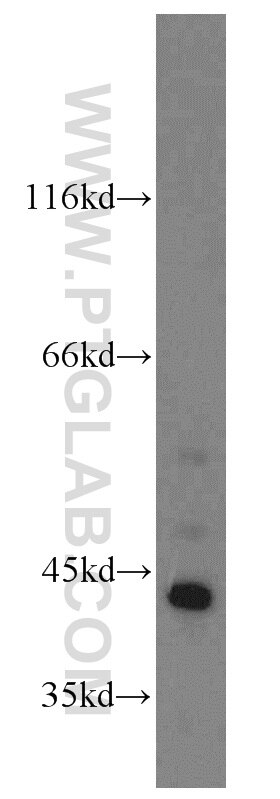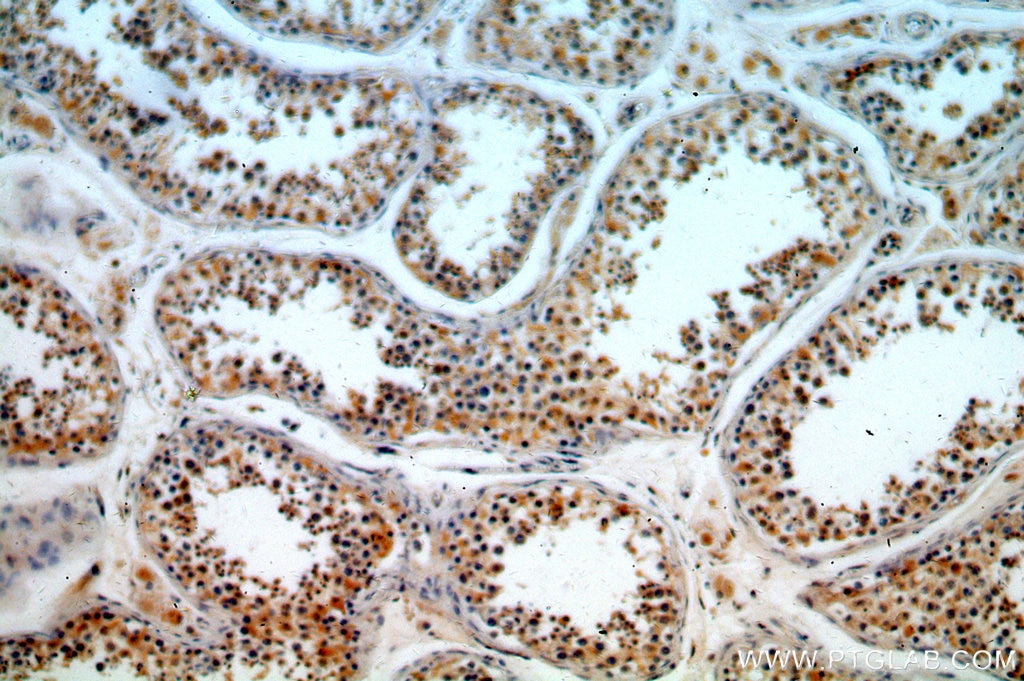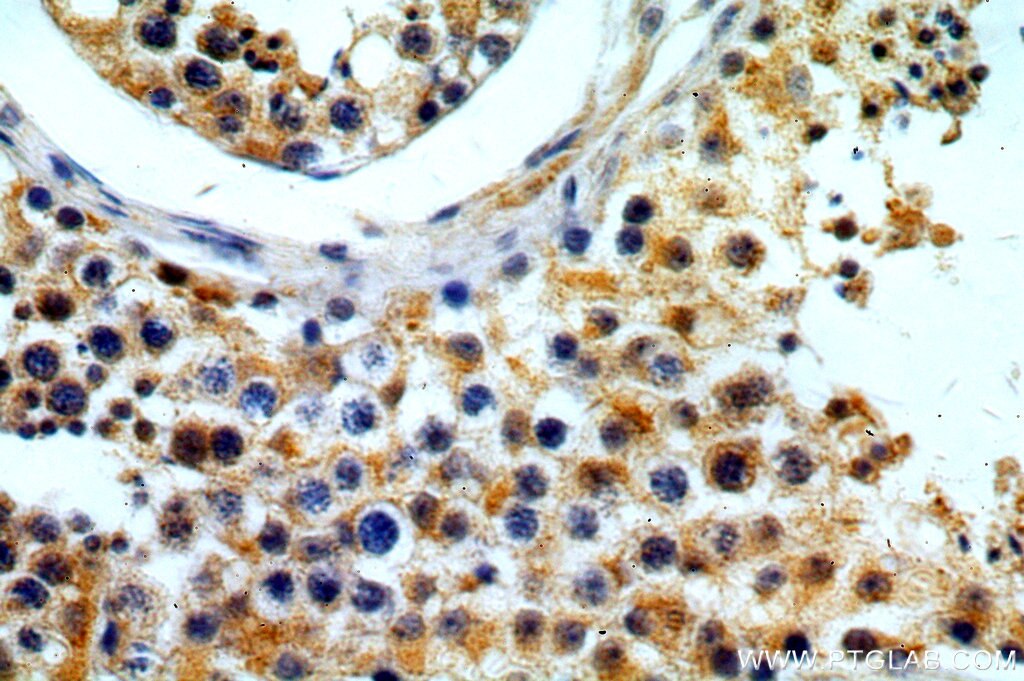Tested Applications
| Positive WB detected in | HeLa cells |
| Positive IHC detected in | human testis tissue Note: suggested antigen retrieval with TE buffer pH 9.0; (*) Alternatively, antigen retrieval may be performed with citrate buffer pH 6.0 |
Recommended dilution
| Application | Dilution |
|---|---|
| Western Blot (WB) | WB : 1:500-1:3000 |
| Immunohistochemistry (IHC) | IHC : 1:20-1:200 |
| It is recommended that this reagent should be titrated in each testing system to obtain optimal results. | |
| Sample-dependent, Check data in validation data gallery. | |
Published Applications
| WB | See 1 publications below |
| IF | See 2 publications below |
Product Information
18660-1-AP targets FUT10 in WB, IHC, IF, ELISA applications and shows reactivity with human, mouse, rat samples.
| Tested Reactivity | human, mouse, rat |
| Cited Reactivity | human, mouse |
| Host / Isotype | Rabbit / IgG |
| Class | Polyclonal |
| Type | Antibody |
| Immunogen | FUT10 fusion protein Ag13415 Predict reactive species |
| Full Name | fucosyltransferase 10 (alpha (1,3) fucosyltransferase) |
| Calculated Molecular Weight | 521 aa, 61 kDa |
| Observed Molecular Weight | 41-48 kDa |
| GenBank Accession Number | BC063462 |
| Gene Symbol | FUT10 |
| Gene ID (NCBI) | 84750 |
| RRID | AB_10641997 |
| Conjugate | Unconjugated |
| Form | Liquid |
| Purification Method | Antigen affinity purification |
| UNIPROT ID | Q6P4F1 |
| Storage Buffer | PBS with 0.02% sodium azide and 50% glycerol , pH 7.3 |
| Storage Conditions | Store at -20°C. Stable for one year after shipment. Aliquoting is unnecessary for -20oC storage. 20ul sizes contain 0.1% BSA. |
Protocols
| Product Specific Protocols | |
|---|---|
| WB protocol for FUT10 antibody 18660-1-AP | Download protocol |
| IHC protocol for FUT10 antibody 18660-1-AP | Download protocol |
| Standard Protocols | |
|---|---|
| Click here to view our Standard Protocols |
Publications
| Species | Application | Title |
|---|---|---|
Arthritis Res Ther Elevation of α-1,3 fucosylation promotes the binding ability of TNFR1 to TNF-α and contributes to osteoarthritic cartilage destruction and apoptosis. | ||
Nat Chem Biol FUT10 and FUT11 are protein O-fucosyltransferases that modify protein EMI domains |







